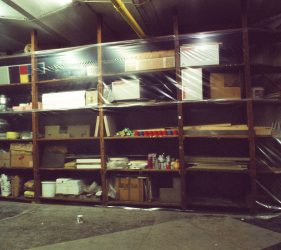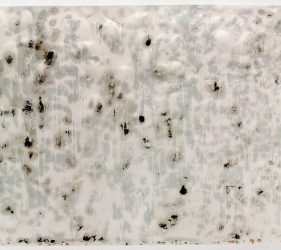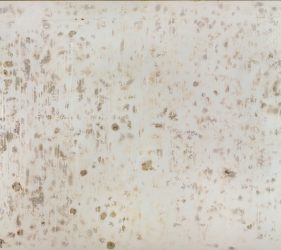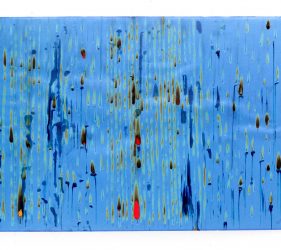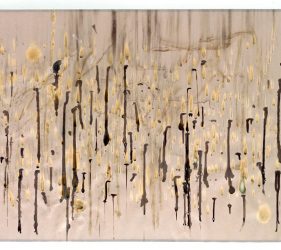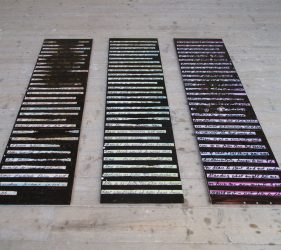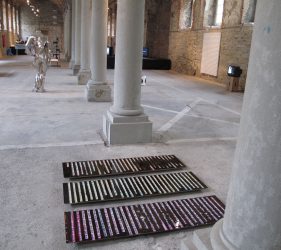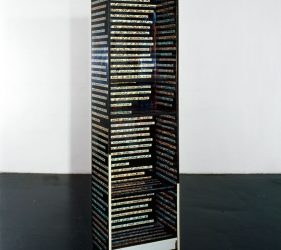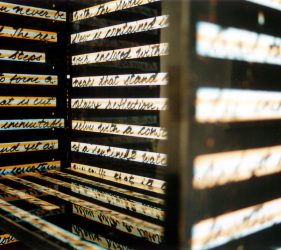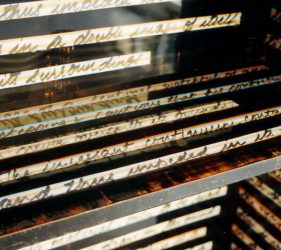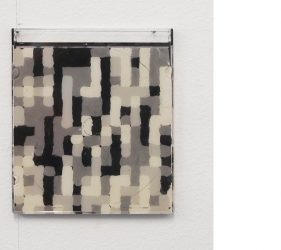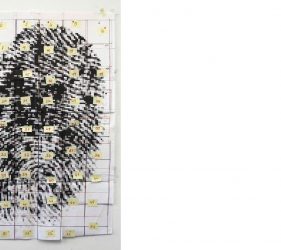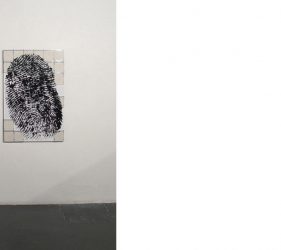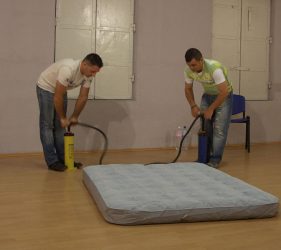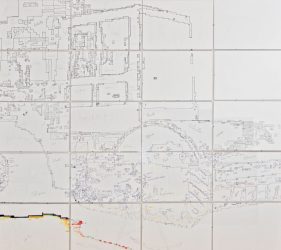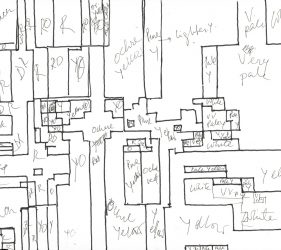A Trace Dismantled
A video showing scenes of a deinstallation, two small boxes with thousands of squares of Plasticine, each the same size, is all that remains of Nita Tandon’s Fingerprint – Die Rückseite der Vorderseite [The Back of the Front]. Is Fingerprint a performance, an installation? Is it an object, a picture, or a sculpture? This defiance of classification is in no way a disruptive factor; to the contrary, it is the very subject of this work: a game of identity for which the oversized fingerprint serves the artist as a motif.
The fingerprint, a pixelated scan in four shades of grey, is made by pressing eight-by-eight-centimetre squares of Plasticine with the finger onto the large glass facade of Schauraum, the exhibition space of the University of Applied Arts, in a passage of Vienna’s Museum Quarter. The space itself remained unused during the entire course of the exhibition. However, visitors were allowed to enter the space at the opening and had the opportunity to see the back of an oversized fingerprint, which in contrast to its two-dimensional front was three-dimensional. Once again Fingerprint defied classification. It was exhibited for several weeks on the glass pane, where passers-by could only view its two-dimensional
front. It was not always apparent even from close quarters that the material used was Plasticine. Finally, the Plasticine was removed and the glass pane thoroughly cleaned. That precisely the process of deinstallation – usually not deemed worthy of documentation – was recorded on film by Nita Tandon is yet another reversal that further underscores Fingerprint’s temporary character.
Fingerprint robs us of all terms of description, or Fingerprint forces us to choose a definition. Nita Tandon thus succeeds in creating a definition of the term ‘identity’ for which she uses methods that are not analytical but purely synthetic, playing a game with identity of which nothing remains but memories of
a documentation of the deinstallation of a fingerprint.
Daniel Wisser, 2011
Regal lautet der Titel dieser Arbeit, die Nita Tandons Beitrag zu einer von ihr kuratierten Gruppenausstellung war, die im Untergeschoß ihres Ateliers stattfand. Die Unzugänglichkeit von Raum und
zur Arbeit benötigtem Material während der Vorbereitungsphase und der gesamten Dauer der Ausstellung wurde zum Gegenstand dieser Arbeit. Tandon verstaute die Materialien, mit denen sie gearbeitet hatte, zusammen mit den unfertigen Werken in einem großen Regal, das im Ausstellungsraum eingebaut war, sodass das Kunstwerk und die Voraussetzungen für seine Produktion, Aufbewahrung und Archivierung in einem Objekt vereint waren.
Human Resource or Zoran and Goran is a performative human sculpture specifically conceived for Northwest by Southeast. Two men selected randomly from workers walking the streets of Skopje in search of work. They were solely employed for the purpose of pumping air simultaneously into and out of an inflatable mattress. This highly strenuous act accompanied by wheezing and squealing sounds produced by air pumped through a valve and sucked out again underpinned the futility of effort. Paid the same wages as they would have probably received for illegal labour in Vienna, their work however achieved no results as the mattress never became entirely inflated nor entirely deflated despite their untiring efforts.

